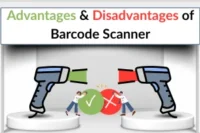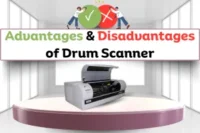Types of Computers for Beginners: Explained with Examples
Published: 12 Apr 2025

Hey Champs – Why Should You Learn About Different Computers?
Are you confused between desktops, laptops, tablets, or even servers? You’re not alone!
Understanding the different types of computers for beginners is the first step toward making smart tech choices. Whether you’re a student buying your first device or someone just curious about computers, this guide will make things super easy.
In this beginner-friendly post, I’ll walk you through the most common computer types using simple language and relatable examples. By the end, you’ll know exactly which computer suits your needs—without getting lost in tech jargon.
Let’s get started!
Computers are like air conditioners – they stop working properly when you open Windows!”😄
Before we explore the different types, it’s important to understand what a computer is and how it works.
Major Types of Computers For Beginners (With Examples)
Here’s a simple explanation of the most common computer types you’ll find around you—from your home to space labs!
Short on time? Let’s quickly look at a list of different types of computers.
- Desktop Computers
- Laptop Computers
- Tablets
- Servers
- Supercomputers
- Mainframe Computers
- Embedded Computers
So champs, ready to roll? Let’s break down each computer type one by one!
1. Desktop Computers
What are they?
Desktops are personal computers that sit on a desk. They usually come with a separate monitor, keyboard, CPU, and mouse.

Real-life example:
The computers you see in school labs, offices, or gaming setups are mostly desktops.
Why use a desktop?
- High performance for multitasking
- Easy to upgrade or repair
- Cost-effective compared to high-end laptops
Best for: Gamers, office workers, designers, teachers
2. Laptop Computers
What are they?
Laptops are portable computers with a screen, keyboard, trackpad, and battery built into one device.
Real-life example:
College students carry laptops to classes or use them to study at home.
Why use a laptop?
- Easy to carry and use anywhere
- Battery-powered, no need to stay plugged in
- Good for school, remote work, and traveling
Best for: Students, freelancers, working professionals
3. Tablets
What are they?
Tablets are lightweight touchscreen computers. Think of iPads or Android tablets.
Real-life example:
Kids use tablets for watching cartoons or playing games. Many people use them for reading or browsing.
Why use a tablet?
- Very portable
- Easy to use (especially for kids and elders)
- Ideal for entertainment and basic tasks
Best for: Casual users, children, travelers
4. Servers
What are they?
Servers are large, powerful computers that store, process, and manage data for other computers.

Real-life example:
Every time you open a website (like Google or Amazon), a server somewhere is sending you the information.
Why use a server?
- Designed to run 24/7
- Can handle many users at once
- Used for hosting websites, storing files, and managing databases
Best for: IT professionals, website owners, large companies
5. Supercomputers
What are they?
Supercomputers are the fastest and most powerful computers in the world. They can perform billions of calculations per second.
Real-life example:
Used by scientists for weather forecasting, climate studies, and space research.
Why use a supercomputer?
- Solves highly complex problems
- Supports large simulations and calculations
Best for: Research labs, military, NASA, space agencies
6. Mainframe Computers
What are they?
Mainframes are huge computers used to process massive amounts of data at once.
Real-life example:
Banks use them to manage thousands of transactions every second.
Why use a mainframe?
- Super reliable and secure
- Can support hundreds or thousands of users at the same time
Best for: Government agencies, banks, airlines
7. Embedded Computers
What are they?
Embedded computers are small chips or systems built into everyday devices. They perform one specific task.
Real-life example:
The system that runs your microwave, washing machine, or smartwatch is an embedded computer.
Why use it?
- Operates specific tasks automatically
- Requires little to no user interaction
- Found in all kinds of modern appliances
Best for: IoT devices, home appliances, health monitors
Classification Based on Size and Power
Not all computers are created equal. Some are tiny enough to fit in your pocket, while others fill entire rooms!
Here’s how computers are grouped based on physical size and processing strength:
1. Microcomputers (Personal Computers)
These are the computers most of us use every day. They are small in size, affordable, and powerful enough for basic tasks.
Includes:
- Desktops
- Laptops
- Tablets
- Smartphones
Real-life use:
Browsing the internet, creating documents, watching videos, playing games.
Users: Students, office workers, families
2. Minicomputers (Mid-range Computers)
Minicomputers were once used by small businesses and departments for shared tasks. Today, most have been replaced by servers or cloud systems.
Includes:
Older business systems used in the 70s–90s.
Real-life use (earlier):
Used for billing, small-scale business operations.
Users: Previously used by small companies and academic institutions.
3. Mainframe Computers
As covered earlier, mainframes are large systems used for serious data processing.
Used in:
- Banks
- Airlines
- Government systems
Handles:
- Big databases
- Thousands of users
- High-speed transactions
4. Supercomputers
The most advanced and high-performance machines on the planet.
Used for:
- Weather prediction
- Scientific research
- Cryptography
- Space exploration
Example: India’s PARAM and the US’s Summit supercomputer.
Classification Based on Purpose
Let’s now understand how computers are grouped by their purpose—what they’re built to do.
1. General-Purpose Computers
These computers are built to do a wide range of tasks.
Examples:
Desktops, laptops, tablets, smartphones.
Used for:
- Web browsing
- Watching videos
- Creating documents
- Using software
2. Special-Purpose Computers
These are designed to do only one task, but do it very efficiently.
Examples:
- ATMs
- Digital wristwatches
- Smart fridges
- Hospital monitors
Used for:
- Specific control or automation tasks
- Real-time monitoring
- One dedicated job only
Which Computer Type Is Right for You?
Still not sure which computer suits you best? Don’t worry—I’ve made it super simple.
Here’s a quick guide based on your needs. Just find the category you belong to, and see the best match.
User Type | Best Option | Why? |
Student | Laptop / Tablet | Lightweight, portable, runs study apps easily |
Gamer | Desktop (High-spec) | Better graphics, cooling, and upgradability |
Business Owner | Laptop / Desktop | Multitasking, business software, flexibility |
Designer / Developer | Desktop / High-end Laptop | Handles complex tools like Photoshop, coding IDEs |
Casual User | Tablet | Easy browsing, reading, light entertainment |
Research Lab / Data Work | Supercomputer / Mainframe | High power for simulations and massive calculations |
Comparison Table – At a Glance
Still in a rush? Here’s a table to quickly compare all types of computers:
Type | Portable? | Power Level | Best For | Price Range |
Desktop | No | High | Office, gaming, work-from-home | Moderate |
Laptop | Yes | Medium–High | Students, professionals | Varies (Low to High) |
Tablet | Yes | Low–Medium | Reading, videos, light use | Low to Mid |
Server | No | Very High | Networks, websites | High |
Supercomputer | No | Extreme | Research, weather, space | Very High (millions ₹) |
Mainframe | No | High | Banking, corporations | High |
Embedded Computer | (tiny) | Low | Devices, appliances | Low |
Real-Life Examples and Use Cases
You’ve learned the types—but where do we actually see them? Let’s break it down with easy examples from everyday life:

Desktops
Where used? School labs, cyber cafes, office cubicles, and home study corners.
Real-life scenario: A graphic designer uses a desktop with a big monitor for editing high-resolution images.
Laptops
Where used? Colleges, cafes, meetings, even your bed!
Real-life scenario: A college student takes notes in class and attends Zoom lectures using a lightweight laptop.
Tablets
Where used? Classrooms, living rooms, airplanes, clinics.
Real-life scenario: Kids use tablets to attend online school and watch cartoons, while doctors use them to check patient records.
Servers
Where used? Web hosting companies, large offices, universities.
Real-life scenario: The blog you’re reading right now? It’s hosted on a server that’s running 24/7.
Supercomputers
Where used? Space agencies, weather departments, big research labs.
Real-life scenario: Scientists use supercomputers to predict cyclones or simulate Mars landings.
Mainframe Computers
Where used? Banks, airlines, government systems.
Real-life scenario: When you withdraw cash or check your bank balance—there’s a mainframe silently handling it behind the scenes.
Embedded Computers
Where used? Everywhere! Microwaves, elevators, ATMs, fitness bands, even cars.
Real-life scenario: Your smartwatch tracks your steps and sleep using a tiny embedded computer.
The point is: You’re already surrounded by different types of computers—even if you didn’t notice!
Conclusion – Choose Smart, Stay Curious!
So my champs, learning about the types of computers for beginners isn’t just for tech geeks—it’s for everyone. Whether you’re a student choosing your first laptop, a parent helping your child with online classes, or just curious about how devices work, this knowledge helps you make smarter choices.
The more you know, the more confident you become with technology. And that’s a powerful skill in today’s world.
Now it’s your turn:
👉 What kind of computer do you use—and why did you choose it?
I’d love to hear from you in the comments!
And hey—if this beginner-friendly guide on the types of computers helped you, don’t forget to bookmark the blog or share it with a friend who’s also trying to learn.
Stay tuned to MyComputerGeek.com for more simple, helpful posts on computers for beginners. I’m here to make tech feel easy and fun—just like it should be!
FAQs – Types of Computers for Beginners
Let’s answer some of the most frequently asked questions beginners have about computer types.
The four main types are Microcomputers, Minicomputers, Mainframe computers, and Supercomputers. These are based on size, power, and usage. Microcomputers include things like desktops and laptops that we use every day.
A basic laptop is usually the best. It’s portable, runs study apps, and fits in a backpack. If you’re more into reading and watching, even a tablet works great. Choose what suits your learning style.
Yes, totally! A tablet is a type of microcomputer. It’s smaller than a laptop but can still browse the web, stream videos, and run apps.
General-purpose computers do many tasks—like browsing, typing, or gaming.
Special-purpose computers do only one job—like the chip inside an ATM or your microwave.
Absolutely! Your smartphone is a mini-computer. It does what traditional computers do—surfing the internet, sending emails, playing games—all from your pocket.
A hybrid computer combines both digital and analog features. Hospitals often use them in medical machines where fast calculations and real-time data are needed.
Not really. For tasks like blogging, emailing, or making presentations, a basic laptop or desktop is enough. No need to spend extra on high-end machines unless you’re editing videos or gaming.
Supercomputers top the list. They’re used for space missions, climate predictions, or decoding genomes. You won’t see them in homes—but they quietly help shape our future.
Want more questions answered? You can always drop a comment or connect on social media—I’m here to help beginners like you learn computers the easy way.

- Be Respectful
- Stay Relevant
- Stay Positive
- True Feedback
- Encourage Discussion
- Avoid Spamming
- No Fake News
- Don't Copy-Paste
- No Personal Attacks

- Be Respectful
- Stay Relevant
- Stay Positive
- True Feedback
- Encourage Discussion
- Avoid Spamming
- No Fake News
- Don't Copy-Paste
- No Personal Attacks



